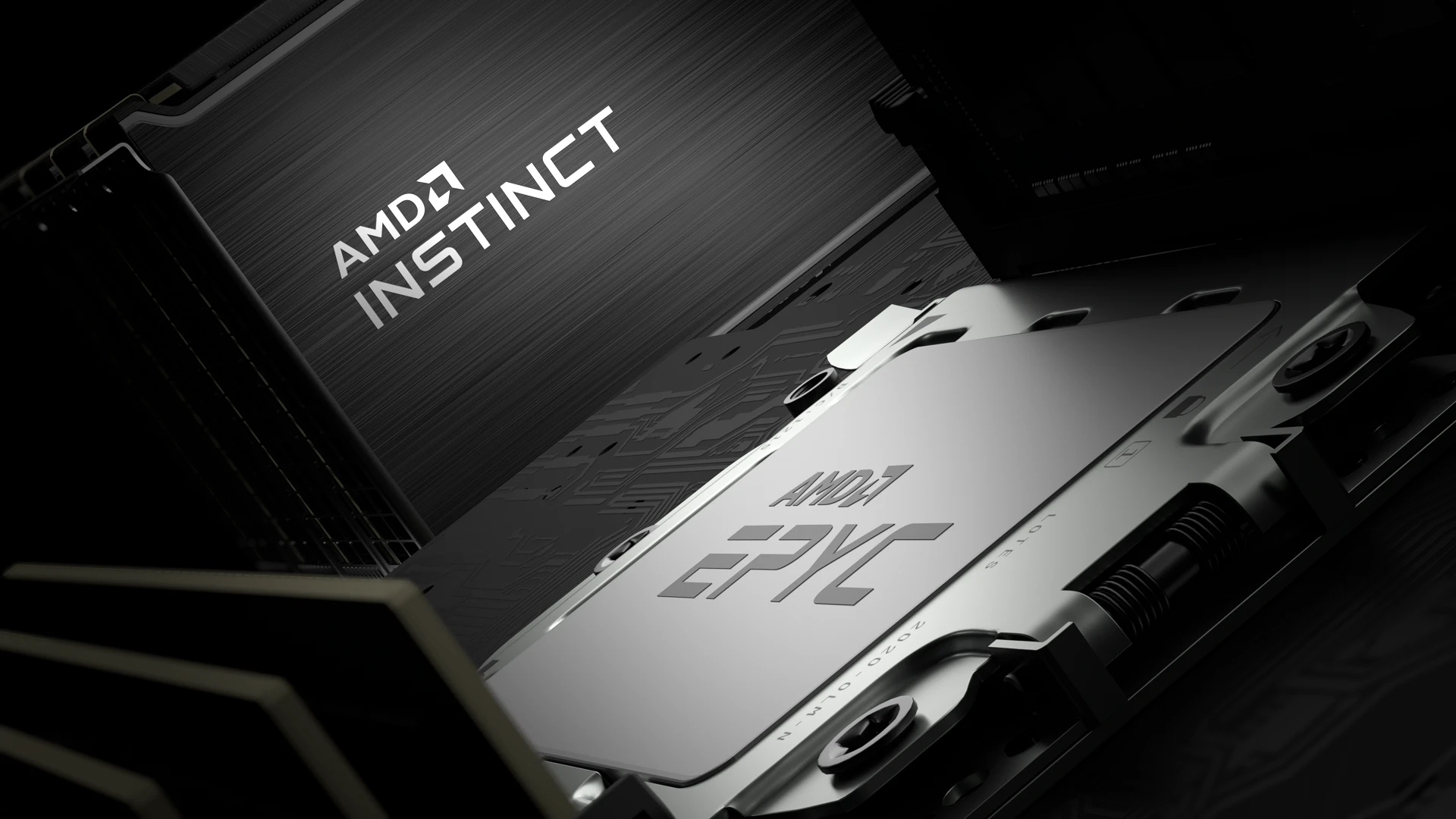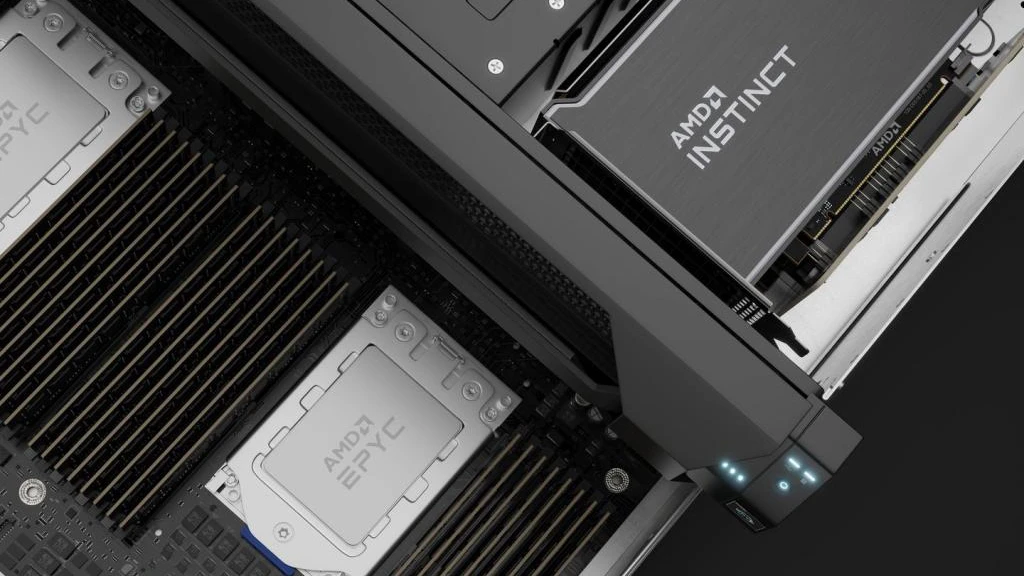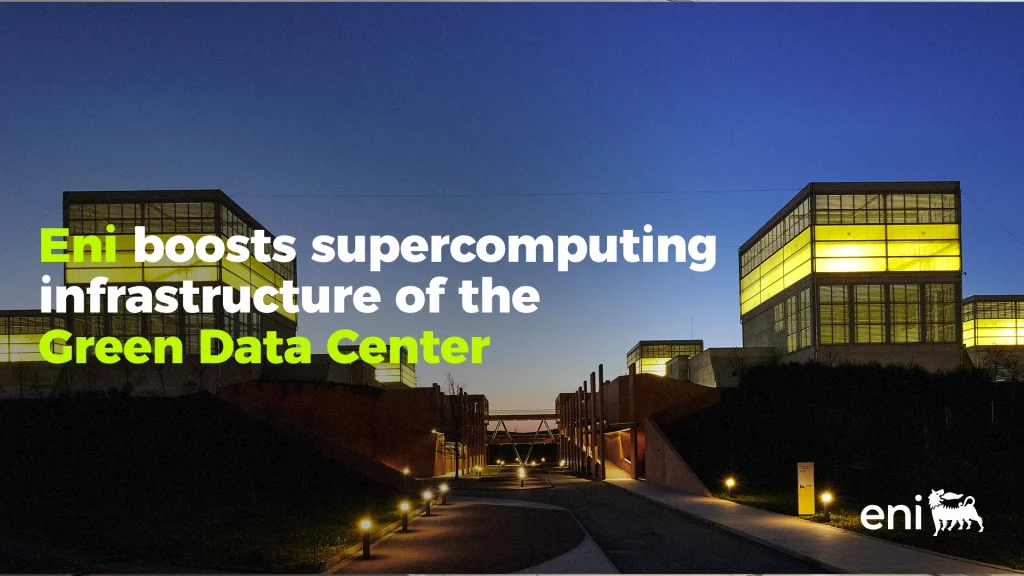
Eni is improving the supercomputer infrastructure of the Green Data Center
Eni has begun building a new high-performance computing (HPC) system, the HPC6, with the goal of significantly increasing the computing power of the HPC4 and HPC5 from their current 70 PFlop/s to a peak of over 600 PFlop/s, or 600 quadrillion math operations per second. The new Eni HPC system, characterized by extraordinary computing power, thus marks an increase in computing capacity by an order of magnitude compared to its predecessor.
The HPC6 architecture is based on the same technology that powers leading systems of its type around the world. The HPC6 system and its storage are provided by Hewlett Packard Enterprise (HPE), which won the tender in a competitive international process, and will use HPE Cray EX4000 systems and HPE Cray ClusterStor E1000 technologies for the HPC6 system and storage, respectively.
 AMD
AMDThe computer system includes AMD EPYC™ processors and AMD Instinct™ graphics processors, along with the HPE Slingshot Interconnect network, an open Ethernet-based high-performance network designed to support exascale workloads. When completed, the HPC6 will be one of the most powerful supercomputer in the world dedicated to industrial applications.
In line with Eni’s commitment to sustainability, HPC6 will be more energy efficient, minimizing carbon emissions. It will be located in a special part of the Green Data Center, where a new liquid cooling system has been built to further improve its efficiency and sustainability.
CEO of Eni, Claudio Descalzi, stated: “Through this initiative, we continue to demonstrate our technological leadership, confirming Eni’s role in supercomputing and relaunching our ambitions through a dedicated infrastructure. This project highlights our ongoing commitment to innovation and digitization, while simultaneously supporting our energy transition process. The new HPC system significantly improves our computing capabilities and marks a key shift in the way we face challenges related to energy security, competitiveness and sustainability.”
 AMD
AMDThis investment strengthens Eni’s leadership in industrial high-performance computing and consolidates its position as a high-tech company supporting the energy transition. In addition to supporting Eni’s digitization and innovation process, HPC6 is a key resource in facing the challenges of achieving net zero, providing a key technological lever for gaining competitive advantages in the development of new energy sources.
Eni the HPC4 and HPC5 high-performance computing system has a combined computing power of 70 quadrillion floating-point operations per second (70 PFlop/s), with a hybrid architecture that optimizes performance and limits power consumption. The two supercomputers are located in the Green Data Center in Ferrera Erbognone, one of the most efficient and carbon-friendly data centers in Europe: in addition to being partially powered by a 1MW photovoltaic plant, for at least 92% of the year the machines are cooled by low-speed circulating air , minimizing the use of air conditioning.
 Eni
EniKey features of the Eni HPC6:
- Computing power: the system can reach an impressive peak computing power of over 600 PFlop/s (Rpeak) and 400 PFlop/s “continuous” (Rmax), making it one of the most advanced supercomputing infrastructures in the world.
- Node Composition: Each node consists of a 64-core AMD EPYC™ processor and four high-performance AMD Instinct™ MI250X graphics processors for high computing efficiency and unmatched versatility, making it suitable for a wide range of applications.
- Size: the system includes 3,472 computer nodes containing a total of 13,888 graphics processors, organized in 28 cabinets for optimal use of space and maximum performance.
- High-performance network: The HPE Slingshot Interconnect network with Dragonfly topology provides fast and reliable interconnection of nodes, facilitating high-speed data transfer and increasing the ability to handle complex workloads.
- Cooling system: the system uses direct liquid cooling technology that dissipates 96% of the heat generated, keeping components at optimal temperatures for consistent performance and contributing to environmental sustainability through more efficient energy use.
- Power consumption: the system has a maximum power consumption of 10.17 MVA, reflecting exceptional performance and energy efficiency.